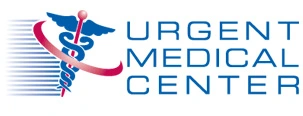 Your eyes, legs toenails and skin may indicate signs of high cholesterol. If you don’t treat high cholesterol it leads to plaque build up in your artery walls, known as atherosclerosis, and limits blood flow. If you are diagnosed with high cholesterol your body has so much bad cholesterol that it doesn’t even know what to do with it.
Your eyes, legs toenails and skin may indicate signs of high cholesterol. If you don’t treat high cholesterol it leads to plaque build up in your artery walls, known as atherosclerosis, and limits blood flow. If you are diagnosed with high cholesterol your body has so much bad cholesterol that it doesn’t even know what to do with it.
Can You Treat High Cholesterol?
With proper treatment and diet and lifestyle changes you can get your cholesterol back to a healthy level. On the other hand, if high cholesterol remains untreated you could develop coronary artery disease (CAD), peripheral arterial disease and/or suffer a heart attack, stroke or transient ischemic attack (TIA). There are many secondary issues that can arise from high cholesterol, such as PAD. 20% of people with PAD suffer a nonfatal heart attack within 5 years.
Good Vs. Bad Cholesterol
“Bad” cholesterol, Low-density lipoproteins (LDL), can build up in your arteries and lead to health complications. “Good” cholesterol, high-density lipoproteins (HDL), returns your LDL cholesterol to the liver where the body can get rid of it. Your body needs a healthy balance of both good and bad cholesterol.
A diet high in fats increases LDL cholesterol in your blood. If LDL levels become too high or if you don’t have enough HDL cholesterol to remove excess LDL, fatty deposits build up in your blood vessels. As a result, it makes it difficult for your body to pump adequate blood supply, creating potentially life-threatening problems impacting the heart or brain.
High cholesterol does not always cause symptoms; in fact it typically begins with no symptoms at all. That’s why regular cholesterol screenings are so important regardless if you think you have high cholesterol or not.
Here Are 7 Unexpected Signs You Have High Cholesterol
1. Cholesterol Buildup In Your Eyes
When your body has too much cholesterol it can show up anywhere with arteries passing through. Your eyes are full of tiny blood vessels where high cholesterol can show up. You may notice a fatty skin deposit (xanthoma) in your cornea or yellow fat deposits around your eyelids. Xanthomas are not reserved to your eyes, they may also appear on your elbows, knees or ankles, as well as other parts of your skin.
2. You Experience Leg Pain While Exercising
If you experience a burning pain or feel like your legs are tired or “heavy” it may indicate poor blood flow to your legs, which could be related to high cholesterol. Pain may impact one or both legs, as well as any part of the leg from the calf to your buttocks. Most of the time the pain subsides with rest but then reoccurs when you do the same level of activity again, such as walking two blocks.
3. You Wake Up With Leg Cramps At Night
Leg cramps, numbness or spasms that hit you during the night, usually in the heel, toes or forefoot, may indicate high cholesterol. If you hang your foot off the bed or sit up in a chair it should start to feel better as gravity forces blood flow back into your feet.
4. Abnormal Looking Toenails & Legs
If your legs and feet are not getting adequate blood flow the results may show in your toenails. Signs include thickening toenails or toenails that grow slower than normal.
Your skin may also change in appearance, becoming shiny and tight looking. If when you hold your leg up it appears white, but when you place it down it turns a purple/red color this indicates your body is diluting blood vessels in order to increase blood flow to your feet. Your feet may also turn pale or bluish when you sit for long periods because you’re not getting proper blood circulation.
5. Irregular Hair Growth On Your Legs
If you shave your legs you may notice your hair growing back slower or not at all. If you don’t shave you may notice hair loss on your feet or legs.
6. Your Hands & Feet Are Always Cold
If your extremities are getting cold for no reason it could relate to poor blood flow. If you notice one foot or hand is cold and the other is not, it’s especially important to bring it up to a doctor.
7. Your Ulcers Are Not Healing
If you have ulcers or other wounds on your body that are not healing with time it could be related to bad blood flow. Ulcers tend to range between brown and black and are usually pretty painful. They require immediate medical attention.
How Often Do You Need Cholesterol Screenings?
Everyone 20 and older should have cholesterol screenings once every 5 years. High cholesterol starts off with no symptoms at all, and this is when you want to catch it. Visit Urgent Medical Center today for on-the-spot testing and results!





